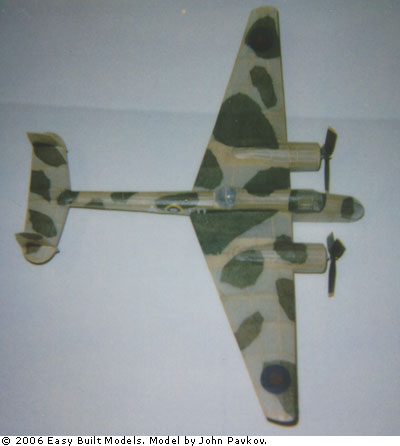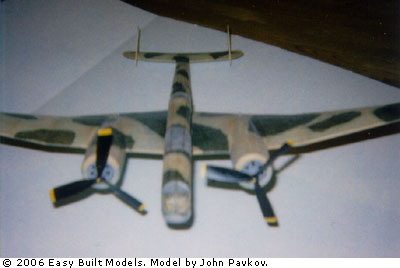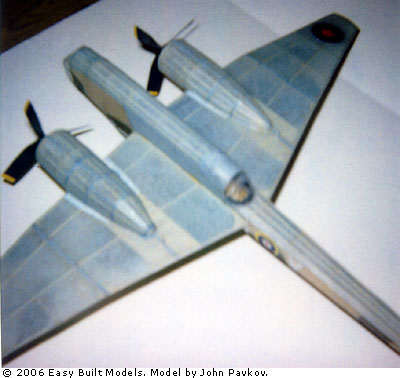The Handley-Page Hampden bomber was used by the Royal Air Force from 1937 until early 1943. It was one of four twin-engine bombers in service with the RAF at the start of WWII together with the Bristol Blenheim, the Armstrong-Whitworth Whitley, and the Vickers Wellington. The Hampden, Whitley, and Wellington in particular were used during the early stages of the war to drop bombs on targets in Germany in raids of increasing intensity throughout 1940 and 1941 in response to German bombing raids on British towns and cities. They were all much lighter than the four-engine 'heavies' such as the British Stirling, Halifax and Lancaster and American Liberator and Flying Fortress bombers that largely took over from 1942, of course carrying much heavier bomb loads until the end of the War. Thanks to Paul Elkin for this historical information. His father worked for Boulton Paul Aircraft in Wolverhampton, England from 1936 until 1946.
This kit is a 1:28 scale display model. Pre-1942 design, eligible for Society of Antique Modelers (SAM) contests.
This display kit contains a full-size plan, printed balsa and hand-picked balsa strip wood, vacuum-molded canopy and 3 observation/gun turrets, wheels, Easy Built Lite tissue in light sky blue, evergreen, and brown, and TissueCal™ markings. To build this model you will need a building board set, hobby knife, fine sandpaper, and glue.
CUSTOMER BUILDS & INFO
Rubber power Hampden bomber built by Bernard Dion flies!
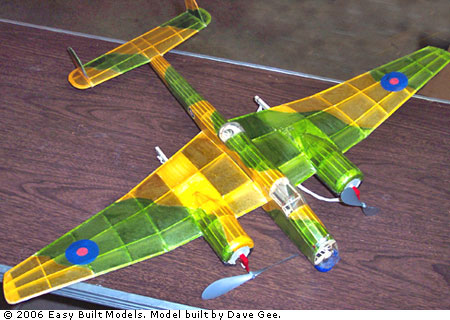
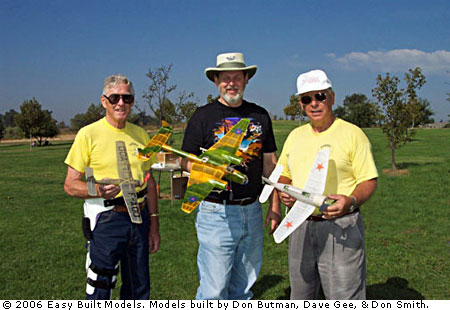
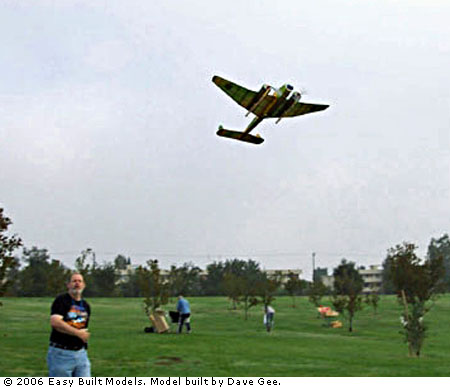
Dave Gee modified his Hampden for rubber powered flight and took third place at the Black Sheep Squadron fall 2006 Grassy Knoll event. Don Butman (left) won first place with his Hollywood Hamilton and Don Smith (right) took 2nd place with his Kharkov.
Read Dave's construction notes.

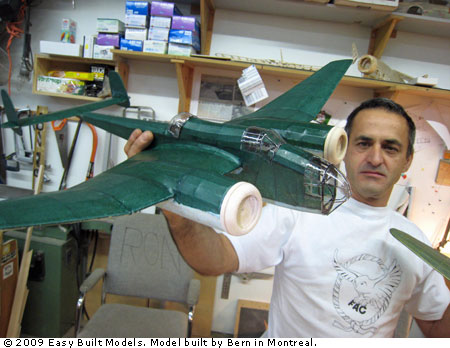
Bernard Dion from Montreal, Canada clowns with his nearly completed Hampden and Defiant planes. Using a technique developed over years of model building, Bernard gave his Hampden a war ravaged finish.
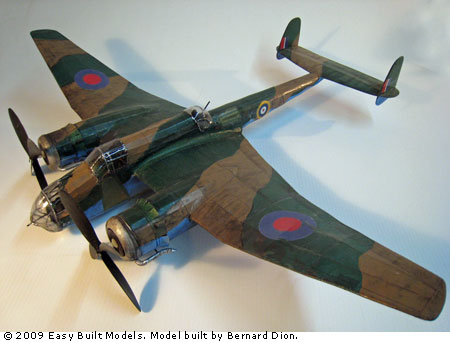
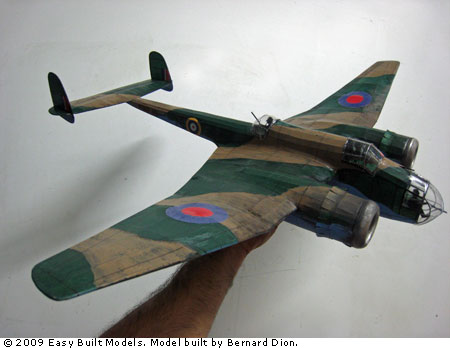

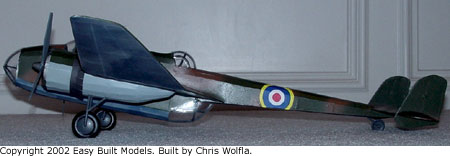
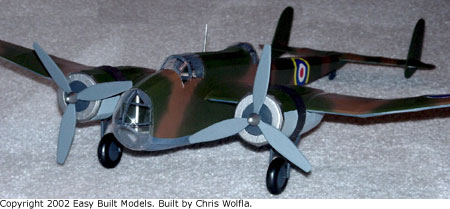
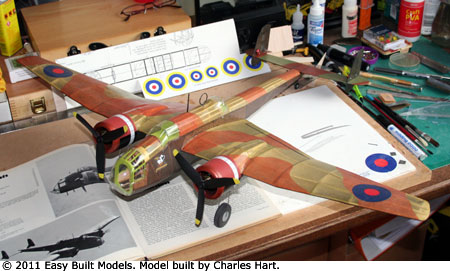

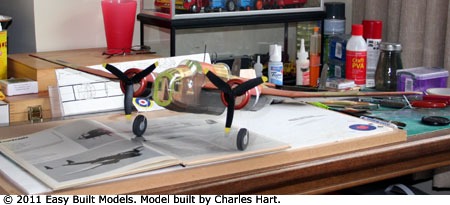
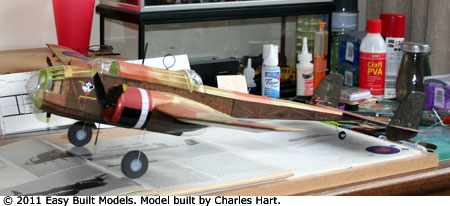
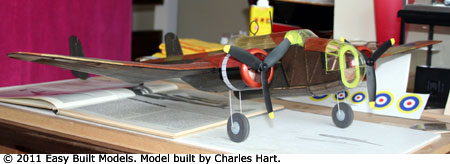
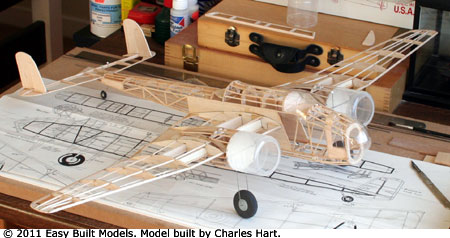
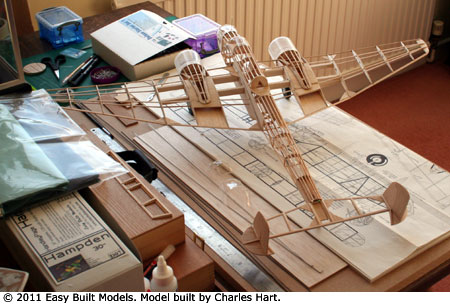
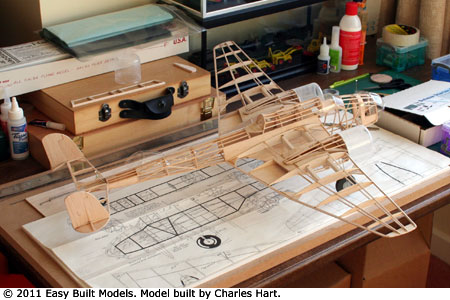
"Some images of my Hampden converted to electric radio control. The engine nacelles were made from the tops of aerosol paint canisters which were exactly the right diameter and length, all I had to do was cut the opening with a firewall inserted into the back. The engines, Plantraco GB07, contra rotating, were then held in place using carbon rod. The fuselage and wings were strengthened using 1/16th sheet balsa and 2 spars were added. I enlarged the tail surfaces by 15%, initially building these using the built-up method, in the end I rebuilt the tail surfaces using 1/16th sheet, this proved to be lighter. The radio is Plantraco and is amazing! There is a mini-actuator inserted on each rudder and one for the elevator up front in the fuselage. All the glazing fits really well, just have to be patient when cutting these pieces out. I covered the airframe using Japanese tissue, black and green and the brown tissue supplied with the kit was then overlayed to create the camoflage effect. A Plantraco radio system installed with contra rotating props, rudders and elevator." - Charles Hart
